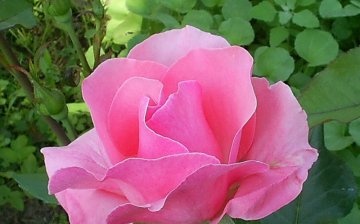Rose varieties for the garden
People began to decorate their lives with roses since ancient times. Greeks and Romans admired their beauty, they sang medieval minstrels. These beautiful flowers are cultivated in the East and West. Numerous varieties of roses are divided into old (bred before 1867) and modern. Old roses (Alba, Aishire, Gallic, Bourbon, mossy, Noisette, Portland, tea) are incredibly beautiful, but not winter-hardy enough for European winters, they are not compact, they are not resistant to diseases, their petals quickly crumble. Modern roses are devoid of these disadvantages. They are the result of long-term selection, which began with the crossing of remontant and tea varieties.
Modern rose varieties are subdivided into the following garden groups:
- floribunda;
- tea-hybrid4;
- miniature;
- grandiflora;
- curly;
- scrubs;
- park;
- ground cover.
The color of a rose can be white, yellow, orange, red, purple, red, maroon (often called black), brown. Some species are colored with two or more colors. Most common are hybrid tea roses (Peace, Duftwolke, Folklore, Princess Alexandra and others). Floribunda roses (Shocking Blue, Melody Maker, Fragrant Delight, Chatsworth) have flowers inferior in size to hybrid tea, but bloom from early spring to late autumn and are distinguished by a variety of shades.
Polyanthus (multi-flowered) roses were obtained by crossing a Chinese tea time and a dwarf rose. They are not fragrant, but winter-hardy and have a long flowering period. These plants (Perle Angevine, Cineraria, Dick Koster, Denise Cassegrain, Gloria Mundi) are low-growing but highly branching shrubs. Roses of Grandiflora have very large flowers. Of the most popular varieties, the easy-to-breed Queen Elizabeth and the most commonly used for distillation "Sonya" can be noted.




I prefer large, winter-hardy roses in a variety of colors - Floribunda roses, as well as curly flowers, which have many roses arranged vertically. Such flowers can be used to decorate, for example, a gazebo.